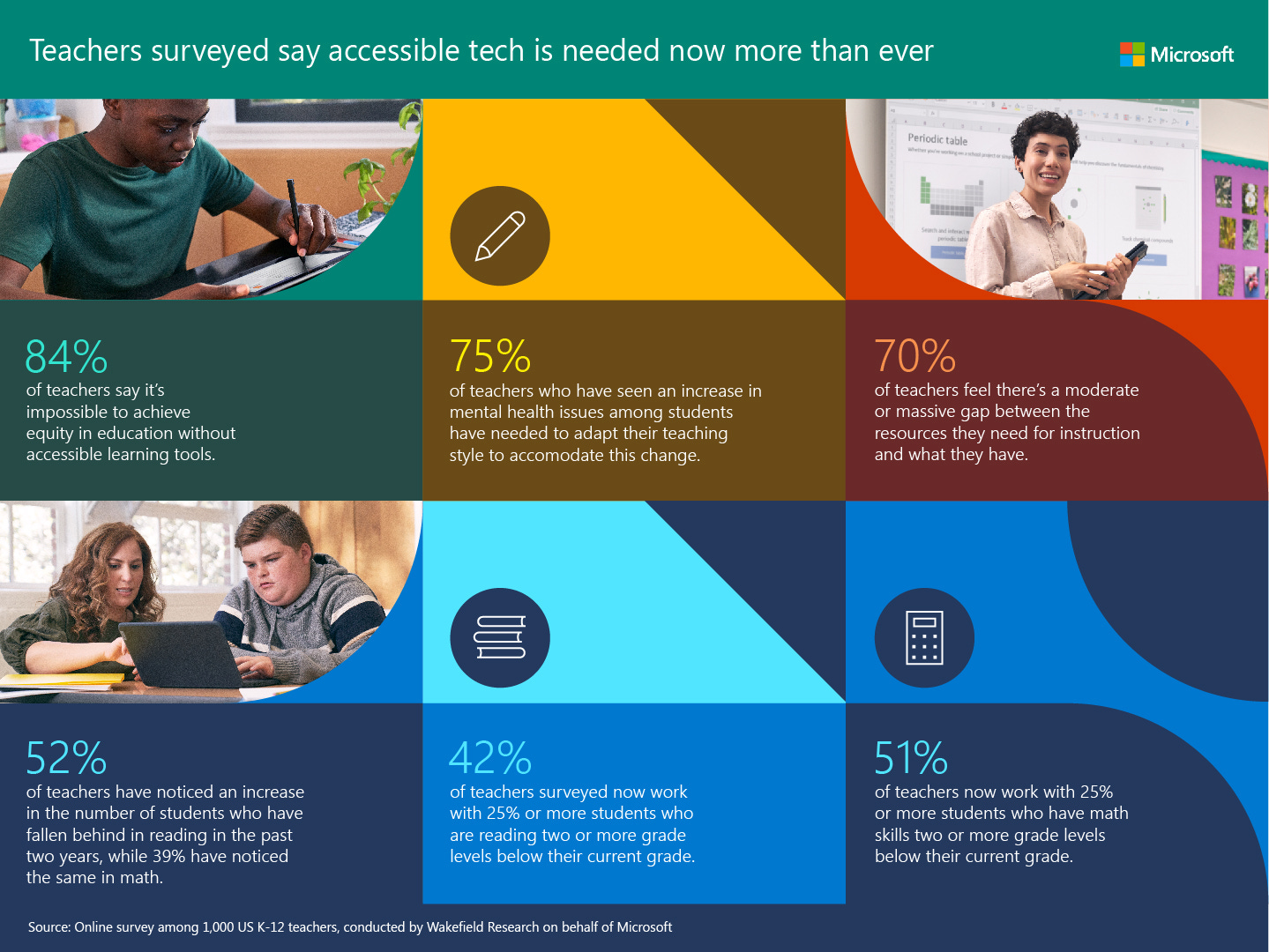The great COVID beta test students and teachers endured during these past two years revealed several stark realities, but none more than the importance of having technology tools available and usable for all. In her new role as Vice President for Microsoft Education, Paige Johnson says these efforts have become front and center. Her blog post last month details a Microsoft survey that reflects this mindset.
“Each day, teachers and school leaders are faced with the challenge of meeting the needs of a growing audience of diverse learners to help them reach their full potential. Nearly half (46 percent) of teachers work one-on-one with students who require accommodations. According to the Centers for Disease Control and Prevention (CDC), one in four adults in the United States have a disability that impacts major life activities.”
Some more numbers from the survey:
Accessible technology allows for more inclusive classrooms and can bridge the gap between teachers and students. Teachers need help to do what they do best.
Nearly all teachers (95%) say they don't have all the resources they need to serve their students, and 46% say they are not trained to use the technology.
Further, 59% say the gap in what they need versus what they have has grown during the past two years.
School systems need support in designing accessible learning environments.
Despite 70% of schools having made a moderate or massive additional investment in technology in the past two years, 70% of teachers still feel there is a gap between the resources needed for instruction and what they currently have.
Pandemic effects on classrooms are more widespread than we might think.
Nearly two out of five (41%) teachers say there has been an increase in their students’ mental and emotional issues in the past two years.
I had a chance to press Paige about what these stats mean in the big picture.
Have a listen above and scroll down for a few highlights.
On how ideas of accessibility can get baked into code:
Our CEO Satya Nadella is committed to accessibility because he lives it with his children. So he has, from the beginning of his leadership, really been a champion for designing technology with accessibility in mind, from the drawing board all the way through to the end generation.
And when he first came on board as a CEO, one of the things he did was reinvent our mission statement. So Bill Gates's mission statement was a “PC on every desktop.” Satya's mission statement is to “empower every human on earth to do more, to achieve more.”
We live and breathe that every day as part of empowering every human on earth, to make sure that our technology is fully inclusive and accessible to all people regardless of their abilities. And to think about how that empowerment makes people more productive, happier, more healthy, and thriving in a knowledge-based economy. And in the pandemic, I think we saw that need come to the forefront.
On technology tools to enhance the teacher experience:
If we don't start leveraging the data, we won't harness the power of what technology can bring. It's not about replacing teachers with technology. When we were testing reading progress, we had a special education teacher out of Atlanta who said, “I used to spend every Thursday night doing reports with graphs and color charts of all of my kids for my parent calls on Friday. You've saved me three or four hours of time. Now I spend my Thursday nights thinking about how do I help this child next week?” Isn't that what we want our teachers to be doing?
On what the phrase “digital equity” means post-pandemic:
It's not an easy mission. And I think like laundry, it will never be done, just to be clear. But I believe that what we need to do with schools is make sure that we are looking at the longer-term goal. How do we enable more equity, not just digital equity? We sort of pigeon hold ourselves into what digital equity is —access to a device and the internet. That's necessary but insufficient.
Now it's time to start talking about how now we have this infrastructure, how do we lift all kids up? How do we make teachers more efficient and effective when they're exhausted from the last three years? How do we better support families and parents? How do we give kids access to fun and engaging materials that make them want to come back to school?




Share this post